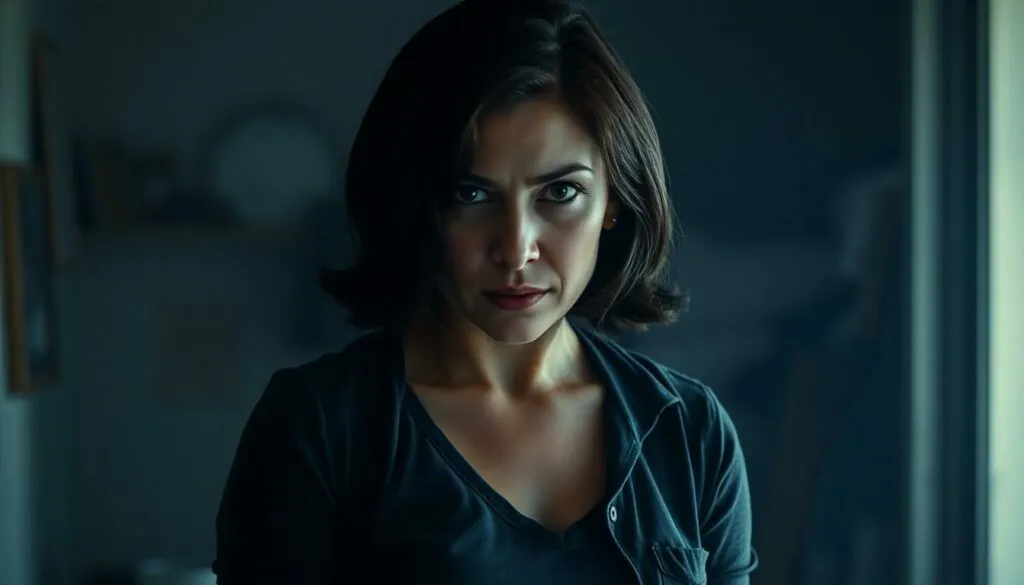In the world of cinema, few things pack a punch quite like a mother’s instinct. Whether it’s a heartwarming tale or a nail-biting thriller, movie mothers have an uncanny ability to sniff out trouble faster than a bloodhound on a scent. From fiercely protective to hilariously clueless, these cinematic matriarchs bring a unique blend of love and chaos to the screen.
Table of Contents
ToggleOverview of Movie Mothers Instinct
Mothers hold a significant place in film narratives, often embodying an instinct that transcends genres. These characters reveal an innate ability to sense trouble long before it manifests. From thrillers to comedies, movie mothers frequently oscillate between fierce protectiveness and cluelessness, amplifying the emotional stakes.
Diverse portrayals enrich the cinematic landscape, demonstrating how maternal instincts can be both empowering and humorous. Protective mothers emerge as fierce warriors in action films, fighting against threats to their children. In dramas, their intuition often uncovers deeper family issues, leading to pivotal revelations.
Comedic representations offer a refreshing take, where mothers might overlook obvious dangers but still manage to stumble upon surprising solutions. Such characters infuse charm into complex situations, showcasing that instinct can manifest in varied and unexpected ways.
Numerous films effectively capture this instinctual bond, creating memorable moments that resonate with audiences. Each portrayal emphasizes the unique blend of love, chaos, and resilience typical in mother-child relationships. Definitions of motherhood may differ, yet the underlying instinct remains universally relatable.
These cinematic mothers not only entertain but also provoke thought regarding the nature of nurturing. Audiences witness the profound connections formed under pressure, illuminating the essence of maternal love. The journey unfolds through laughter and tears, reflecting the many facets of motherhood in all its glorious unpredictability.
Plot Summary
This section delves into the intricate dynamics of movie mothers, showcasing their instinctual roles in storytelling. Film portrayals capture their multifaceted nature, emphasizing the emotional depth they bring to various genres.
Main Characters
Recognizable characters often include protective mothers, who demonstrate fierce loyalty, and more comical figures, who express endearing cluelessness. In action films, strong matriarchs take on challenges, displaying resilience and bravery. Frustrated yet lovable moms frequently appear in comedies, navigating absurd situations while inadvertently saving the day. Dramas present mothers revealing hidden family truths, deepening connections among characters. Each mother embodies a distinct blend of instinct and personality, enhancing narrative momentum and engaging viewers emotionally.
Key Themes
Central themes encompass intuition, love, and sacrifice. Protective instincts stand as a primary focus, showcasing mothers who sense danger before it arises. Moments of chaos often emerge, reflecting the unpredictable nature of parenting. In comedic scenarios, lightheartedness challenges serious undertones, creating balance. Dramatic revelations highlight the emotional weight of motherhood, illustrating the pivotal role these characters play in forging connections. Ultimately, movie mothers navigate complexity, blending chaos with love in every storyline, resonating with audiences through their relatable struggles and triumphs.
Cinematic Techniques
Cinematic techniques play a pivotal role in portraying mothers’ instincts effectively in film. Skilled directors utilize distinct styles that enhance storytelling.
Directing Style
Unique directing styles shape how mothers’ instincts are depicted. For instance, some directors focus on close-ups to highlight emotional nuances, fostering audience connection. Other filmmakers leverage rapid cuts during moments of tension, emphasizing a mother’s instinctual reactions. These choices create a dynamic viewing experience, drawing attention to the conflict between maternal protectiveness and external threats. Moreover, directors may employ long takes to capture the complexity of a mother’s internal struggle, allowing viewers to feel the tension firsthand. Such styles enrich narratives, showcasing diverse portrayals of maternal instincts in various cinematic genres.
Cinematography
Cinematography significantly enhances the portrayal of mothers and their instincts on screen. Different shot compositions, like tight framing, emphasize the emotional weight of a mother’s decisions. Lighting techniques set the mood, with shadows often mirroring the uncertainty mothers face when sensing danger. Additionally, colors may reflect emotional states; warmer hues could indicate safety, while cooler tones evoke tension or fear. Movements of the camera often mirror a mother’s perspective, creating a sense of urgency when her instincts kick in. This visual storytelling deepens the impact of maternal characters, allowing audiences to engage with their experiences more profoundly.
Performance Analysis
Examining performances reveals how effectively mothers are portrayed in film. The emotional depth of these characters often hinges on the lead actress’s ability to embody maternal instincts.
Lead Actress Performance
Lead actresses bring a wealth of experience and emotion to their roles. Delivering nuanced performances, they capture the essence of maternal instincts, showcasing a blend of vulnerability and strength. Emotional scenes often require subtle facial expressions and dynamic body language, which many actresses masterfully convey. Some memorable portrayals include Jodie Foster in “The Brave One” and Viola Davis in “Fences,” both exemplifying fierce protectiveness. Audiences connect deeply with these performances, feeling the weight of each decision made by these characters. These actresses not only reflect the unique struggles of motherhood but also resonate with viewers on a personal level.
Supporting Cast
Supporting cast members also play crucial roles in enhancing the narrative surrounding mothers. Often, they provide contrasting perspectives that highlight the mother’s instincts. Characters such as siblings, fathers, and friends create tension and moments of levity. Their interactions reveal the complexity of family dynamics, drawing attention to a mother’s intuition. For instance, a sibling might challenge a mother’s decisions, sparking relatable conflicts that enrich the storyline. Additionally, well-crafted supporting roles can either amplify or diminish the lead actress’s impact, shaping audience perceptions of maternal figures. Effective performances from the ensemble cast deepen the emotional landscape, making the maternal instincts even more prominent throughout the film.
Audience Reception
Audience reception varies widely for films that portray mothers and their instincts. Many viewers resonate with the fierce protectiveness of mothers depicted in action films, often applauding their resilience in the face of danger. Audiences frequently celebrate comedic portrayals that highlight a mother’s charming cluelessness, adding levity to tense situations.
Critical reviews often emphasize the emotional depth of maternal characters in dramas. These portrayals can lead to profound connections among characters, reflecting real family dynamics that audiences find relatable. Viewers express appreciation for complex narratives that showcase a mother’s ability to uncover hidden truths, especially when strong performances deepen the emotional impact.
Survey data from box office hits shows that movies with well-crafted maternal figures attract larger audiences. Audiences are drawn to the tension between maternal protectiveness and external threats, often considering this conflict a driving force in the story. Positive feedback on performances, particularly from celebrated actresses like Jodie Foster and Viola Davis, underlines the importance of strong portrayals in making maternal instincts palpable.
Critics regularly mention the effectiveness of cinematography in amplifying audience engagement. Directing styles, such as close-ups and rapid cuts, heighten emotional stakes and allow viewers to connect with mothers’ experiences. Enhanced visuals illustrate maternal dilemmas while spotlighting their determination and strength.
Interactions between maternal figures and supporting characters often shape audience perceptions. Viewers appreciate the contrasting dynamics offered by siblings and partners, which highlight the complexities of motherhood. Relationships within the narrative enrich the storyline and contribute to a nuanced understanding of maternal instincts, resonating with audiences on multiple levels.
Conclusion
Movie mothers embody a profound blend of instinct and emotion that resonates deeply with audiences. Their ability to sense trouble and navigate chaos adds layers to storytelling across genres. Whether fierce protectors in action films or comedic figures in lighter narratives, these characters highlight the complexities of motherhood.
The cinematic portrayal of mothers not only entertains but also invites reflection on the nature of nurturing and family dynamics. Their relationships with supporting characters enhance the emotional landscape, making their journeys relatable and impactful. As viewers connect with these maternal figures, they witness the powerful instincts that drive them, leaving a lasting impression that lingers long after the credits roll.




